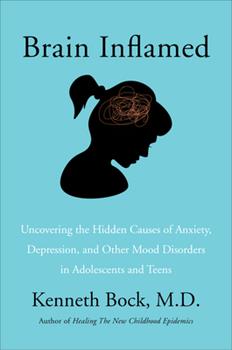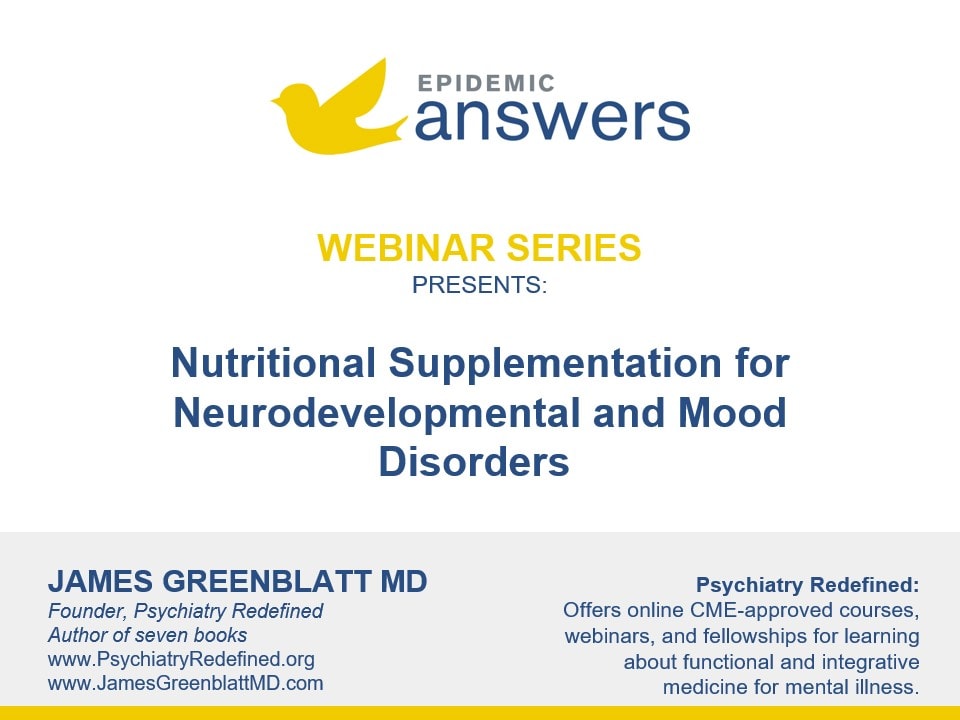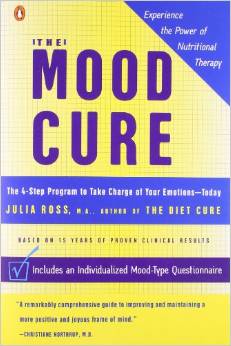Depression and anxiety are commonly misunderstood to be mental-health disorders when in fact they could be symptoms of imbalances within the body. Recent medical research (see Sources & References below) is showing time and time again that they are whole-body disorders, as are other neurological conditions such as autism and ADHD. If this is the case, then bringing the body back into balance can affect the health of the brain.
Antidepressant Side Effects
Most people think that the only thing to do for depression and anxiety is to take an antidepressant. However, doing so is not without risks, as side effects from taking antidepressants may range from none to mild to severe. They include:
- Anxiety
- Insomnia or sleep issues
- Skin rashes
- Joint and muscle pain
- Stomach upset
- Nausea
- Diarrhea
- Headaches
- Reduced blood-clotting capacity
- Stomach or uterine bleeding, especially if taking NSAIDs (aspirin, ibuprofen, naproxen)
- Muscle spasms
- Tics or repetitive muscle movements
- Parkinsonism (rigid and trembling limbs, a shuffling gait, loss of fine motor control)
- Compulsive restlessness/hyperactivity
- Self-destructive thoughts
- Suicide
In 2004, the U.S. FDA placed a black-box warning on antidepressants about the significantly increased risk of suicidal thinking, feeling, and behavior in children under the age of 18. If these medications aren’t a good idea for children, here are some ideas for alternative ways of addressing your child’s anxiety or depression. We recommend that you work with a healthcare practitioner who can monitor the implementation and progress of these interventions.
Antidepressant Alternatives
When you start to think of depression and anxiety as whole-body disorders instead of brain-only disorders, your perspective shifts. Instead of limiting your choices to different antidpressant medications, your options for improving your body’s and thus your brain’s function improves dramatically.
If your child is currently taking an antidepressant, it is important to work with a doctor to wean him or her off of the medication, if that’s what you wish to do. We recommend that you work with a holistic psychiatrist or functional-medicine doctor to do so.
Lower Inflammation
Depression and anxiety are now being understood as symptoms of a body that is out of balance, especially in the case of excess inflammation. In fact, one of the reasons why antidepressants work is that they are anti-inflammatory.
While NSAIDs (nonsteroidal anti-inflammatory drugs) such as ibuprofen are by definition anti-inflammatory, there are other options such as vitamin C, CBD and omega-3 fatty acids such as DHA and EPA. You can find more ideas for other ways to lower inflammation here.
Heal the Gut
It is becoming more well known these days about the link between the health of the brain and the health of the gut, which is sometimes called the second brain. Inflammation in the gut from hidden food sensitivities may be contributing to symptoms, and an elimination diet can be implemented to see if this is the case. In addition, cleaning up the diet can remove other common sources of inlammation such as artificial colors, flavorings and preservatives.
By implementing a gut-healing diet such as the GAPS diet, Paleo diet or Body Ecology Diet, the intestinal microbiome may be able to better fight off pathogens and to better produce neurotransmitters such as serotonin.
Consider Supplementing with 5-HTP
Holistic psychiatrists and functional-medicine doctors will often wean their patients off of anti-depressants while gradually adding in increasing amounts of 5-HTP (5-hydroxytryptophan), which is the precursor to serotonin, the “happy” neurotransmitter. Be sure to work with a knowledgeable doctor if you try this approach.
Exercise
There are thousands of peer-reviewed medical research studies that show that exercise can decrease symptoms of depression and anxiety. There are multiple mechanisms for this, one of which is the well-known benefit of the release of endorphins, which are hormones that are responsible for the “runner’s high”.
Exercise also reduces levels of glucose – a sugar – in the blood. Sugar is inflammatory and can therefore contribute to symptoms of depression and anxiety.
Get a Good Night’s Sleep
Poor sleep is highly associated with depression and other psychiatric disorders. It is also “an independent risk factor for suicidality and substance use in adolescents“. The use of social media at night has been implicated in poor sleep quality, although it is not the only potential cause. Obstructive Sleep Apnea could also be contributing to depression and anxiety, especially if your child snores or is a mouth breather.
Reduce Blue Light at Night
Most TVs, smartphones, computer monitors and smartpads use LED (light-emitting diodes), which produces a high amount of light in the blue range of visible light. Blue light inhibits the production of melatonin, which is a powerful anti-inflammatory hormone that encourages sleep.
Get out in the Sunshine
Although blue light at night inhibits quality sleep, it is important to get plenty of it during daylight hours in the form of sunshine. Doing so can stave off symptoms of depression and anxiety. Light therapy has been used for years to counteract Seasonal Affective Disorder (SAD), which occurs during months of less sunshine for those that live further from the earth’s equator.
The amount of serotonin produced is directly correlated with the amount of sunlight exposure, so be sure to get your child outside in the sun every day, especially in the winter months.
Consider Supplementing with Vitamin D
Vitamin D, known as the “sunshine vitamin”, is produced when sunshine activates cholesterol in the skin. A deficiency of it is a contributing factor for depression. Ask your doctor to order 25-hydroxy test, which measures the amount of vitamin D in the blood. Although most practitioners will simply look at the test results and say that a level of 30 ng/dL is a “normal” level, “normal” is not the same as “optimal”. Functional-medicine doctors are more likely to say that levels of 80-100 ng/dL are needed for optimal health.
Vitamin D is a common supplement but be sure that it is in the form of D3; D2 is the form most often form found in foods. In addition, taking it with vitamin K2 increases its effectiveness. Both D2 and K2 are fat-soluble vitamins and are commonly found in animal fat but not plant fat. A person following a vegan diet is much more likely to be deficient in these immune-boosting vitamins and may thus be more prone to immune-system problems and depression.
Reset Your Circadian Clock
A person with a circadian rhythm that is not in sync with the sun is more likely to have depression. The information above about sunlight and blue light can be used to conclude that getting up around sunrise and going to bed not too many hours after sunset is best for optimal health. Ben Franklin was correct when he wrote that “Early to bed and early to rise makes a man healthy, wealthy and wise.”
It should also be noted that going against this synchronized circadian rhythm increases cortisol when a person gets a “second wind” and stays up past the bedtime of 11:00pm for an adult. Bedtime should be much earlier for a child; the younger the child, the earlier the bedtime. This cortisol release interferes with melatonin production and causes a blood-sugar spike. The combination of increased inflammatory blood sugar with lower amounts of anti-inflammatory melatonin means that a person who stays up late chronically is more likely to have a chronic health condition. Indeed, a systematic review of nurses found that they have a significant risk of breast cancer if they work the night shift for prolonged periods.
Test for the Presence of Chronic Infections Such as Lyme, Lyme Coinfections and/or Strep
Your child’s mood and behavioral issues could be the result of chronic Lyme and/or PANS/PANDAS, which means that pathogens and/or toxins have crossed the blood-brain barrier to cause obsessive compulsive (OCD) behaviors, anxiety, depression and other “psychiatric” symptoms. It’s best to work with a Lyme-literate or PANS/PANDAS practitioner who knows how to test and treat these conditions correctly; you can find many of them in our practitioner directory.
Work with a Cognitive Behavioral Therapist (CBT)
Talking about problems with a qualified therapist can significantly reduce symptoms of depression. Cognitive Behavioral Therapists often teach their clients a “toolbox” of methods and coping strategies to reframe personal challenges in order to improve emotional regulation.
Work with a Transcranial Magnetic Stimulation (TMS) Practitioner
Transcranial Magentic Stimulation is a technology that uses special magnets to normalize neural activity. It is an FDA-approved for depression, and there is an increasing number of clinics who use it. This non-invasive treatment has been around for decades, and there are many research articles that document its benefits, especially for depression.
Consider Neurofeedback
Neurofeedback therapy trains the brain to create new neural pathways to reduce brain wave combinations that produce anxiety, depression and other symptoms. It is sometimes covered by health insurance policies in the United States, and it is worth checking into.
Still Looking for Answers?
Visit the Epidemic Answers Practitioner Directory to find a practitioner near you.
Join us inside our online membership community for parents, Healing Together, where you’ll find even more healing resources, expert guidance, and a community to support you every step of your child’s healing journey.
Sources & References
Andreazza, A.C., et al. Mitochondrial complex I activity and oxidative damage to mitochondrial proteins in the prefrontal cortex of patients with bipolar disorder. Arch Gen Psychiatry. 2010 Apr;67(4):360-8.
Atladottir, H.O., et al. The increasing prevalence of reported diagnoses of childhood psychiatric disorders: a descriptive multinational comparison. Eur Child Adolesc Psychiatry. 2015;24(2):173-83.
Bai, S., et al. Efficacy and safety of anti-inflammatory agents for the treatment of major depressive disorder: a systematic review and meta-analysis of randomised controlled trials. J Neurol Neurosurg Psychiatry. 2020 Jan;91(1):21-32.
Bayer, J.K., et al. The Cool Little Kids randomised controlled trial: population-level early prevention for anxiety disorders. BMC Public Health. 2011;11:11.
Bennett, S., et al. Use of modified spectacles and light bulbs to block blue light at night may prevent postpartum depression. Med Hypotheses. 2009 Aug;73(2):251-3.
Bergamaschi, M.M., et al. Cannabidiol Reduces the Anxiety Induced by Simulated Public Speaking in Treatment-Naïve Social Phobia Patients. Neuropsychopharmacology. 2011 (36), 1219–1226.
Berk, M., et al. So depression is an inflammatory disease, but where does the inflammation come from? BMC Med. 2013;11:200.
Berry, E.A., et al. National estimates of the inpatient burden of pediatric bipolar disorder in the United States. J Ment Health Policy Econ. 2011;14(3):115-23.
Bersani, F.S., et al. Deep transcranial magnetic stimulation as a treatment for psychiatric disorders: a comprehensive review. Eur Psychiatry. 2013 Jan;28(1):30-9.
Beyer, K.M.M., et al. Exposure to neighborhood green space and mental health: evidence from the survey of the health of Wisconsin. Int J Environ Res Public Health. 2014 Mar 21;11(3):3453-72.
Bitsko, R.H., et al. Epidemiology and Impact of Health Care Provider-Diagnosed Anxiety and Depression Among US Children. J Dev Behav Pediatr. 2018 Apr 24.
Blessing, E.M., et al. Cannabidiol as a Potential Treatment for Anxiety Disorders. Neurotherapeutics. 2015 Oct; 12(4): 825–836.
Bonnot, O., et al. Children and adolescents with severe mental illness need vitamin D supplementation regardless of disease or treatment. J Child Adolesc Psychopharmacol. 2011;21(2):157-61.
Bora, S.A., et al. Regulation of vitamin D metabolism following disruption of the microbiota using broad spectrum antibiotics. J Nutr Biochem. 2018 Jun;56:65-73.
Boyle, N.B., et al. The Effects of Magnesium Supplementation on Subjective Anxiety and Stress-A Systematic Review. Nutrients. 2017 Apr 26;9(5):429.
Bravo, J.A., et al. Ingestion of Lactobacillus strain regulates emotional behavior and central GABA receptor expression in a mouse via the vagus nerve. Proc Natl Acad Sci U S A. 2011 Sep 20;108(38):16050-5.
Breier, A.B., et al. The GABAA/benzodiazepine receptor: implications for the molecular basis of anxiety. J Psychiatric Res. 1990;24 Suppl 2:91-104.
Camilleri, M. Serotonin in the gastrointestinal tract. Curr Opin Endrocrinol Diabetes Obes. 2009 Feb;16(1):53-9.
Ceylan, M.F., et al. Lipid peroxidation markers in children with anxiety disorders and their diagnostic implications. Redox Rep. 2014;19(2):92-6.
Chu, A.L., et al. Inflammation and Depression: A Public Health Perspective. Brain Behav Immun. 2021 Jul;95:1-3.
Cohen-Cline, H., et al. Access to green space, physical activity and mental health: a twin study. J Epidemiol Community Health. 2015 Jun;69(6):523-9.
Cooney, G.M., et al. Exercise for depression. Cochrane Database Sys Rev. 2013 Sep 12;(9):CD004366.
Costello, E.J., et al. 10-year research update review: the epidemiology of child and adolescent psychiatric disorders: II. Developmental epidemiology. J Am Acad Child Adolesc Psychiatry. 2006 Jan;45(1):8–25.
Darling, A.L., et al. Association between maternal vitamin D status in pregnancy and neurodevelopmental outcomes in childhood: results from the Avon Longitudinal Study of Parents and Children (ALSPAC). Br J Nutr. 2017 Jun;117(12):1682-1692.
Daut, R.A., et al. Circadian regulation of depression: A role for serotonin. Front Neuroendocrinol. 2019 Jul;54:100746.
de Zambotti, M., et al. Insomnia disorder in adolescence: Diagnosis, impact, and treatment. Sleep Med Rev. 2018 Jun;39:12-24.
Dusetzina, S.B., et al. Treatment use and costs among privately insured youths with diagnoses of bipolar disorder. Psychiatr Serv. 2012;63(10):1019-25.
Fagundo-Rivera, J., et al. Relationship between Night Shifts and Risk of Breast Cancer among Nurses: A Systematic Review. Medicina Kaunas. 2020 Dec 10;56(12):680.
Fernandes, A.C., et al. Development and evaluation of a de-identification procedure for a case register sourced from mental health electronic records. BMC Med Inform Decis Mak. 2013;13:71.
Friedman, R.A., et al. Antidepressants’ Black-Box Warning — 10 Years Later. N Engl J Med. 2014 Oct 31;371:1666-1668
Gold, A.K., et al. Treating Circadian Rhythm Disruption in Bipolar Disorder. Curr Psychiatry Rep. 2019 Mar 2;21(3):14.
Guney, E., et al. Oxidative stress in children and adolescents with anxiety disorders. J Affect Disord. 2014;156:62-6.
Heo, J., et al. Effects of smartphone use with and without blue light at night in healthy adults: A randomized, double-blind, cross-over, placebo-controlled comparison. J Psychiatr Res. 2017 Apr;87:61-70.
Hepgul, N., et al. Depression pathogenesis and treatment: what can we learn from blood mRNA expression? BMC Med. 2013;11:28.
Hibbeln, J.R., et al. Vegetarian diets and depressive symptoms among men. J Affect Disord. 2018 Jan 1;225:13-17.
Kappelman, N., et al. Dissecting the Association Between Inflammation, Metabolic Dysregulation, and Specific Depressive Symptoms: A Genetic Correlation and 2-Sample Mendelian Randomization Study. JAMA Psychiatry. 2021 Feb 1;78(2):161-170.
Karakula, H., et al. [Does diet affect our mood? The significance of folic acid and homocysteine]. Pol Merkur Lekarski. 2009;26(152):136-41.
Kato, T. The role of mitochondrial dysfunction in bipolar disorder. Drug News Perspect. 2006 Dec;19(10):597-602.
Kelly, J.R., et al. Breaking down the barriers: the gut microbiome, intestinal permeability and stress-related psychiatric disorders. Front Cell Neurosci. 2015 Oct 14;9:392.https://pubmed.ncbi.nlm.nih.gov/33079133/
Konradi, C., et al. Molecular evidence for mitochondrial dysfunction in bipolar disorder. Arch Gen Psychiatry. 2004 Mar;61(3):300-8.
Korpela, K., et al. Maternal Fecal Microbiota Transplantation in Cesarean-Born Infants Rapidly Restores Normal Gut Microbial Development: A Proof-of-Concept Study. Cell, 2020.
Kvam, S., et al. Exercise as a treatment for depression: A meta-analysis. J Affect Disord. 2016 Sep 15;202:67-86.
Lambert, G.W., et al. Effect of sunlight and season on serotonin turnover in the brain. Lancet. 2002 Dec 7;360(9348):1840-2.
Lepping, P., et al. Clinical relevance of findings in trials of CBT for depression. Eur Psychiatry. 2017 Sep;45:207-211.
Leuchter, A.F., et al. Intermediate phenotypes and biomarkers of treatment outcome in major depressive disorder. Dialogues Clin Neurosci. 2014;16(4):525-37.
Li, X., et al. Effect of Fluoride Exposure on Anxiety- And Depression-Like Behavior in Mouse. Chemosphere. 2019 Jan;215:454-460.
Marazziti, D., et al. Psychiatric disorders and mitochondrial dysfunctions. Eur Rev Med Pharmacol Sci. 2012;16(2):270-5.
Memon, A., et al. Association between naturally occurring lithium in drinking water and suicide rates: systematic review and meta-analysis of ecological studies. British Journal of Psychiatry. 2020 Dec; 217(6): 667-678.
Meng., Q., et al. Blue light filtered white light induces depression-like responses and temporary spatial learning deficits in rats. Photochem Photobio Sci. 2018 Apr 18;17(4):386-394.
Mitchell, E.S., et al. B vitamin polymorphisms and behavior: evidence of associations with neurodevelopment, depression, schizophrenia,bipolar disorder and cognitive decline. Neurosci Biobehav Rev. 2014;47:307-20.
The GABA system in anxiety and depression and its therapeutic potential. Neuropharmacology. 2012 Jan;62(1):42-53.
Essential elements in depression and anxiety. Part I. Pharmacol Rep. 2014 Aug;66(4):534-44.
Nuss, P. Anxiety disorders and GABA neurotransmission: a disturbance of modulation. Neuropsychiatr Dis Treat. 2015; 11: 165–175.
Osimo, E.F., et al. Inflammatory markers in depression: A meta-analysis of mean differences and variability in 5,166 patients and 5,083 controls. Brain Behav Immun. 2020 Jul;87:901-909.
Osimo, E.F., et al. Prevalence of low-grade inflammation in depression: a systematic review and meta-analysis of CRP levels. Psychol Med. 2019 Sep; 49(12): 1958–1970.
Ostiguy, C.S., et al. Sensitivity to stress among the offspring of parents with bipolar disorder: a study of daytime cortisol levels. Psychol Med. 2011;41(11):2447-57.
Papagianni, E.G., et al. Cannabinoid Regulation of Fear and Anxiety: an Update. Curr Psychiatry Rep. 2019 (21): 38.
Rollins, B., et al. Mitochondrial variants in schizophrenia, bipolar disorder, and major depressive disorder. PLoS One. 2009;4(3):e4913.
Rook, G.A., et al. Microbiota, immunoregulatory old friends and psychiatric disorders. Adv Exp Med Biol. 2014;817:319-56.
Sartori, S.B., et al. Magnesium deficiency induces anxiety and HPA axis dysregulation: modulation by therapeutic drug treatment. Neuropharmacology. 2012 Jan;62(1):304-12.
Savage, K., et al. GABA-modulating phytomedicines for anxiety: A systematic review of preclinical and clinical evidence. Phytother Res. 2018 Jan;32(1):3-18.
Schuch, F.B., et al. Exercise as a treatment for depression: A meta-analysis adjusting for publication bias. J Psychiatr Res. 2016 Jun;77:42-51
Schuch, F.B., et al. The Role of Exercise in Preventing and Treating Depression. Curr Sports Med Rep. 2019 Aug;18(8):299-304.
Shannon, S., et al. Cannabidiol in Anxiety and Sleep: A Large Case Series. Perm J. 2019;23:18-041.
Skelley, J.W., et al. Use of cannabidiol in anxiety and anxiety-related disorders. J Am Pharm Assoc. Jan-Feb 2020;60(1):253-261.
Sukoff, R.S.J., et al. Evidence for sustained elevation of IL-6 in the CNS as a key contributor of depressive-like phenotypes. Transl Psychiatry. 2012 Dec 4;2:e199.
Taurines, R., et al. Expression analyses of the mitochondrial complex I 75-kDa subunit in early onset schizophrenia and autism spectrum disorder: increased levels as a potential biomarker for early onset schizophrenia. Eur Child Adolesc Psychiatry. 2010 May;19(5):441-8.
Thompson, L., et al. What have birth cohort studies asked about genetic, pre- and perinatal exposures and child and adolescent onset mental health outcomes? A systematic review. Eur Child Adolesc Psychiatry. 2010;19(1):1-15.
Van Meter, A.R., et al. What goes up must come down: the burden of bipolar depression in youth. J Affect Disord. 2013;150(3):1048-54.
Warner, B.B. The contribution of the gut microbiome to neurodevelopment and neuropsychiatric disorders. Pediatr Res. 2019 Jan;85(2):216-224.
Wong, S.K., et al. Vitamin D and Depression: The Evidence from an Indirect Clue to Treatment Strategy. Curr Drug Targets. 2018;19(8):888-897.
Woods, H.C., et al. #Sleepyteens: Social media use in adolescence is associated with poor sleep quality, anxiety, depression and low self-esteem. J Adolesc. 2016 Aug;51:41-9.
Yang, B., et al. Effects of regulating intestinal micobiota on anxiety symptoms: A systematic review. General Psychiatry. 2019; 32: e100056.
Resources
Articles
Evolutionary Psychology: Inflammation and Depression: Cause or Effect.
Harvard Medical School: Shining a light on winter depression.
Harvard Medical School: What are the real risks of antidepressants?
New Scientist: Anti-inflammatory drugs can relieve symptoms of depression.
New Scientist: An inflamed brain may be a hidden cause of depression.
Time: Why Sunlight Is So Good for You.
Books
Bock, Kenneth. Brain Inflamed: Uncovering the Hidden Causes of Anxiety, Depression, and Other Mood Disorders in Adolescents and Teens. Harper Wave, 2021.
Brogan, Kelly. A Mind of Your Own. The Truth About Depression and How Women Can Heal Their Bodies to Reclaim Their Lives. New York, Harper, 2016.
Campbell-McBride, Natasha. Gut and Psychology Syndrome: Natural Treatment for Autism, Dyspraxia, A.D.D., Dyslexia, A.D.H.D., Depression, Schizophrenia. 2010.
Greenblatt, James M. Integrative Medicine for Depression: A Breakthrough Treatment Plan that Eliminates Depression Naturally. 2019, FriesenPress.
Greenblatt, James M. (ed.) and Brogan, Kelly (ed). Integrative Therapies for Depression: Redefining Models for Assessment, Treatment and Prevention. 2015, CRC Press.
Greenblatt, James M. and Grossman, Kayla. Nutritional Lithium: A Cinderella Story: The Untold Tale of a Mineral That Transforms Lives and Heals the Brain. 2016, CreateSpace Independent Publishing Platform.
Guyol, G. Who’s Crazy Here?: Steps for Recovery Without Drugs for ADD/ADHD, Addiction & Eating Disorders, Anxiety & PTSD, Depression, Bipolar Disorder, Schizophrenia, Autism. 1st U.S. ed. Stonington, CT: Ajoite Pub.; 2010.
Hyman, Mark. The UltraMind Solution: Fix Your Broken Brain by Healing Your Body First: The Simple Way to Defeat Depression, Overcome Anxiety and Sharpen Your Mind. 1st Scribner hardcover ed. New York: Scribner; 2008.
Lambert, Beth, et al. Brain Under Attack: A Resource for Parents and Caregivers of Children with PANS, PANDAS, and Autoimmune Encephalitis. 2018, Answers Publications.
Ross, Julia. The Mood Cure: The 4-Step Program to Take Charge of Your Emotions–Today. 2003, PenguinLife.




